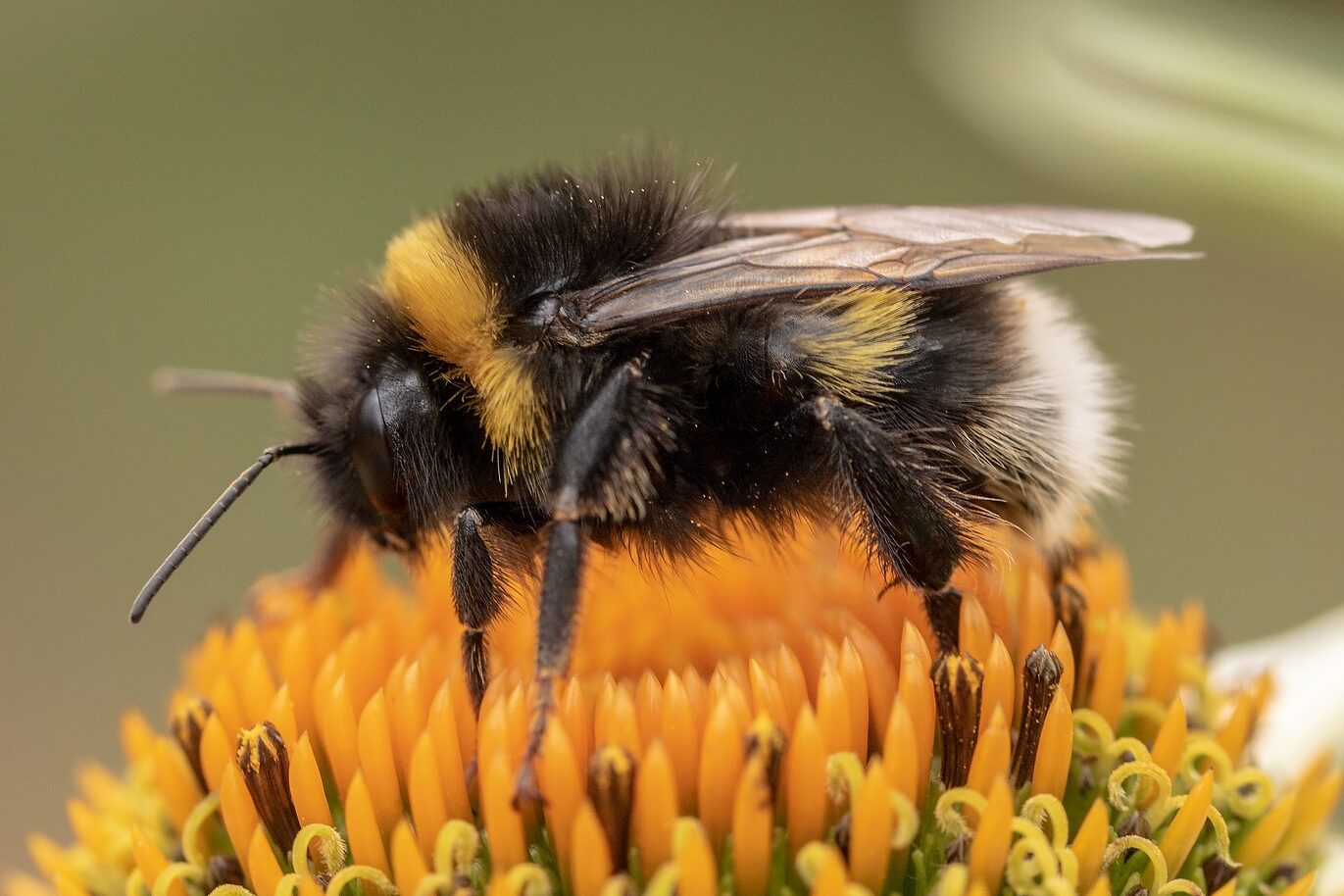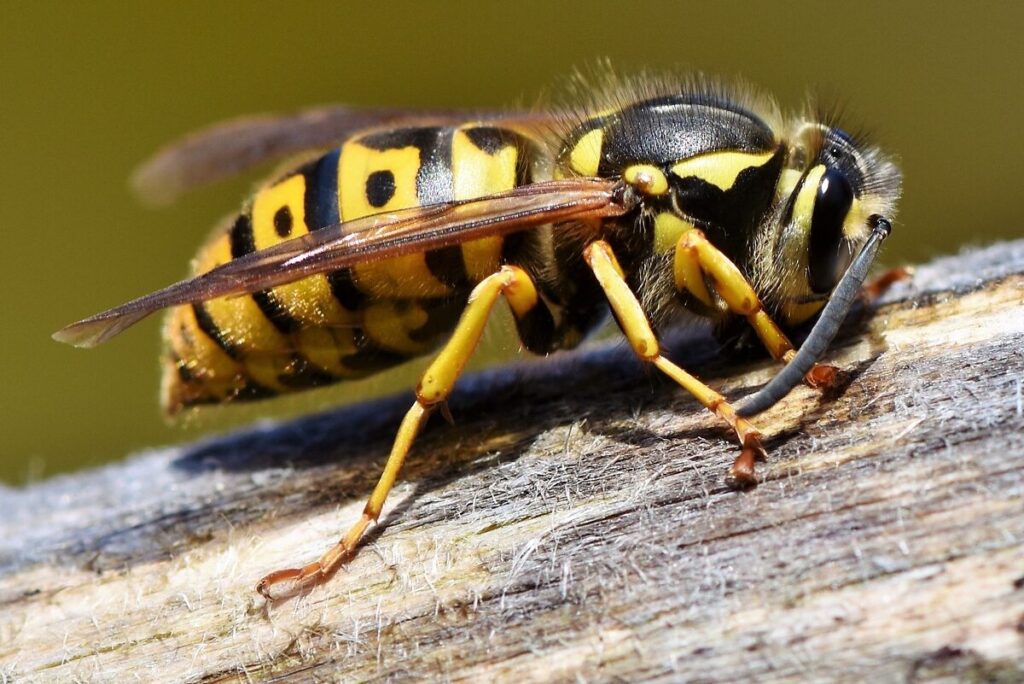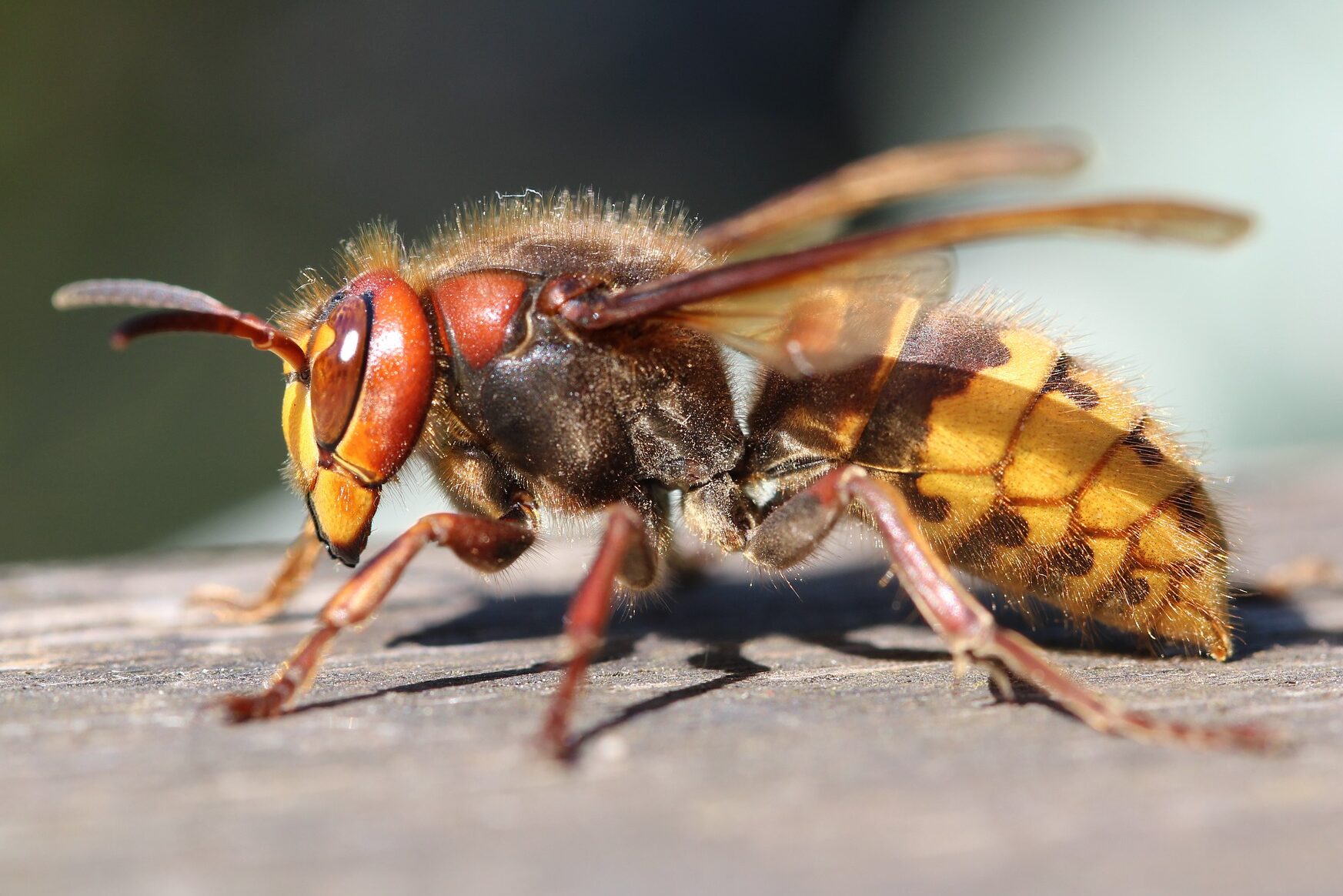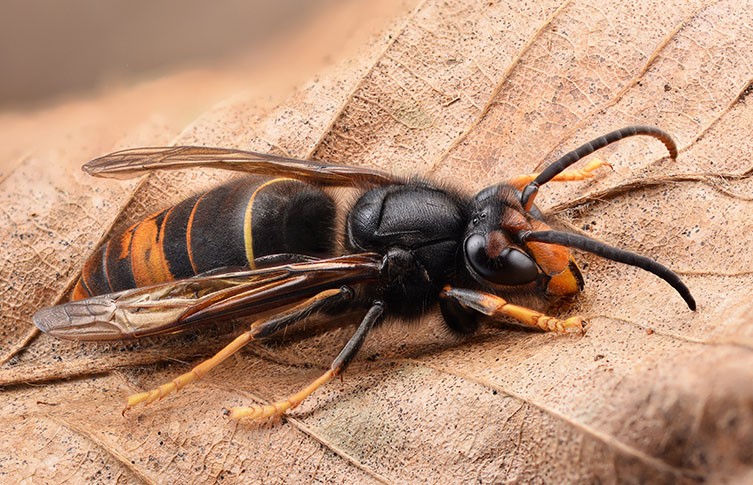I frickin love Bees, who doesn’t? Sadly though, they are having a pretty tough time at the moment. The changing climate, use of pesticides, coupled with increased habitat loss means bees need all the help they can get right now. This post outlines 5 simple ways for anyone to help bees!
Bee-ing pollinators these incredible insects play a critical role not only in maintaining healthy eco-systems but are essential for our food production. It’s estimated, more than 3/4’s of the world’s food crops are in part reliant on bees. With that in mind, it’s in all of our best interests to bee-active in helping the bees thrive.
Many plants are dependant on the process of pollination. Busy bees will collect nectar and pollen from the flower of a plant before moving to the next flower. During this process, pollen is transported onto the stigma, or the tip of the pistil (female reproductive organ of the flower). This courier like service provided by bees is essential for the fertilization of many plants.
Bee-friendly with these 5 easy ways you can help bees your local bee population. I apologize in advance for some of the terrible bee-puns in the is post.
1. How To Save And Prevent Struggling Bees
It’s becoming increasingly common to come across a distressed bee. Exhaustion is the most common cause, they really do earn the saying “busy-bees”. Other potential reasons include having been caught out in the rain or the bee may have a parasite. If a bee is suffering from an internal parasite, there is little you can do.
Place the bee somewhere warm
If our little friend is unresponsive, slide a piece of paper beneath the bee, and gently place it in a warm, dry place. Bees can only fly if the temperature of their thorax remains above 30 degrees, a greenhouse is ideal.
Feed the bee
Create a simple sugar solution by mixing two teaspoons of white granulated sugar with one teaspoon of water. Place the solution on an accessible platform for the bee, a small plate is sufficient. Then leave the solution close to the bee’s head. If you’re lucky, you’ll be able to see the bee feeding with its long, reddish tongue.
Never feed a bee honey, of any kind. Bees can catch viruses if they eat honey from seperate hives.
Now we Wait!
After feeding on the sugary solution many bees will recover within a few minutes to an hour. Place the bee in a safe area outside, ensure that it isn’t raining and simply let him be(e).
Help Prevent Bee’s From Exhaustion
Bees normally source their water from droplets on grass or flowers, so particularly in dry seasons spray or water your plants. Allowing the odd pool of water to collect, thus creating hydrating droplets for our tiny friends.
If you have a water feature or birdbath, arrange pebbles and stones so that they gently break the water’s surface. Allowing a landing pad for the bees to safely enjoy a well-deserved drink. On a particularly hot day, why not leave a bowl with clean water and sugar outside. Use twigs, corks, or stones to provide access to our insect friends. Not only will this help bees, but also butterflies and other insects.
2. Create a Bee Friendly Garden
You don’t need a large amount of space or even a garden to attract bees. Growing bee-friendly plants in window boxes, flowerpots, and across the garden is something accessible to most. The lack of safe habitat to feed and build homes is a serious threat to bee species across the world. By creating these safe pockets of nutritious food sources you are helping build habitat corridors.
Use organic or natural solutions, such as using mulch or compost to aid soil health. Avoid treating your plants with synthetics. This is important as synthetic pesticides, fertilizers, and herbicides are harmful to bees. Other natural ways to improve soil health include regular weeding and adding beneficial insects like ladybugs to keep pests away.
You may be creating safe habitat pockets without even knowing it. An overgrown lawn with dandelions and daises or a patch of wildflowers is a great help to bees.
Variety is key, bees need different plants and flowers to keep them healthy. With over 270 bee species in the UK, they all have different preferences. Wildflowers and fruit trees are loved by most species. Any contribution is still adding to those habitat corridors mentioned above though. Here are 5 simple bee-friendly plant examples to help you get started.
5 simple bee-friendly plant examples:
- Lavender
All pollinating insects love lavender plants as they are very rich in nectar. Not only does it smells, and look brilliant, you can also use the flowers and leaves for herbal remedies.
- Bluebells
The iconic spring flower, normally found covering fields and woodland floors. Great for attracting bees and butterflies.
- Rosemary
Brings a lovely fragrance to the garden, and bees enjoy it too! Rosemary has all sorts of culinary uses as well, so it’s a really practical plant to grow!
- Ox-eye Daisy
The open flower heads of ox-eye daisy attract all sorts of pollinating insects, especially bees. Flowering from May right through to September, they’re a great plant to grow in your garden.
- Lilacs
Lilacs are both beautiful and wonderfully sweet-smelling. Easy to grow and are loved by bees and butterflies.
3. Build Homes for Native Bees
Not all species of bee are hive-minded, many species are solitary. In the UK, we have around 270 species of bee, just under 250 of which are solitary bees! The distinctive bumblebees and honey bees live in hives, whereas solitary species like the red mason bee create individual nests to hatch their larvae from.
Solitary females bees will find a safe nest either below or above ground (depending on the species) before laying up to 30 eggs, each with a ball of pollen attached. She builds a partition wall, then repeats the process until the tube or hole is full. After all this, she then closes the entrance with mud, leaves, or fine hairs. The eggs then hatch into larvae, eat the pollen, and enter hibernation. Emerging in spring, the larvae pupate and turn into adult bees to emerge, hopefully to your bee-friendly garden.
Solitary bees are at real risk and desperately need safe habits to hatch their larvae. This easy to follow document from the WWF shows you how to make a simple and effective bee hotel. You can even get creative and decorate your new establishment with bright colors to attract residents. Bees are particularly attracted to blue, purple, violet, white, and yellow.
Place or fix your bee hotel in your garden, or in some woodland (with the owner’s permission). Try to find a quiet area which gets a lot of sunshine. To start, I made a small scale hotel using just one recycled can, it’s my own B&B, get it?
4. Help To Protect Swarms
Often seen in spring, swarming is when a honey bee colony splits into two or more separate colonies. It can be quite alarming seeing a swarm of honeybees, but the key is to remain calm and contact your local authorities. They will quickly arrange for a local beekeeper to safely move the swarm to a more remote area. A swarm of honeybees is usually harmless unless provoked and present very little danger. The swarm can be made aggressive when disturbed or sprayed with water. The best thing to do is to leave them alone and wait for a competent beekeeper to arrive.
Identifying the species is key before the swarm is removed, other insects or bees can easily be mistaken for honey bee swarms. Try and provide as much detail as possible regarding the location of the swarm as well as the species.
Possible Species:
- Bumble Bee
These round, large and furry bees which come with a variety of colored stripes across the end of their tails. Bumblebees are a protected species so beekeepers cannot disturb them. If you can, leave them to get on with their work and they should not bother you. You will also be able to watch important pollinators go about their work. Towards the end of summer, virgin queens are produced and the nest will die off. Over winter the queens hibernate to start the whole process again next spring, not necessarily in the same nest location.

- Wasps
Intent on ruining your pub lunch these pesky sweet tooth winged devils have yellow legs which bees do not. Their abdomen is smooth, mainly yellow with some black stripes. If you have wasps, contact a pest controller as they can become troublesome during summertime.

- European Hornets
Similar appearance to wasps, European Hornets larger with brown legs and thorax. They have a reputation (due to being terrifying), but will only sting humans if attacked. If the nest is a little to close for comfort, contact a specialist pest remover – don’t try to remove the nest yourself as it can be dangerous.

- Asian Hornet
Smaller than our native hornet, have a velvety dark brown or black body with an orange band on the fourth segment of the abdomen. Individual hornets pose no great risk to humans, although they will try to sting you if provoked. Asian hornets pose a risk to honey bees and other pollinating insects. As they are an invasive species it is important you report any sightings and allow the experts to safely remove the nest.

5. Eat Local Honey
Purchasing local honey from individual beekeepers who practice sustainability makes a big difference and helps protect bees. Reduce your carbon footprint, help local businesses, and have potential health benefits from eating local honey.
While no formal studies have been conducted, there have been links between local honey reducing the effects of seasonal allergies. Regardless honey is still anti-bacterial and useful for many home remedies. Local unfiltered honey can expose you to allergens (pollen) in the honey from local flora potentially reducing allergic responses.
Another reason to source locally, honey brought in from overseas contains bacteria and spores that are harmful to honeybees. Which can be attracted to the remaining honey if left outside or disposed of poorly. Honey bees can become infected and are likely to pass on the infection to the colony. Always wash out honey jars and dispose of them carefully.
Finally – try to eat honey less often. Cutting honey consumption will ultimately help bee populations thrive the most. There’s no need to give it up completely, but just save it for an occasional treat!
Round up
We owe these hardworking crucial pollinators a lot, with bee populations struggling on a global scale they need all the help they can get. Since 1900, The UK has lost 13 species of bee, and a further 35 are considered under threat of extinction. With these 5 super simple and easy steps you can help feed, shelter, rescue, protect, and safely re-home local bees.

Hi, after reading this awesome article i am tooo cheerful to share my knowledge here with colleagues. Zorah Iain Dolley
So glad you enjoyed the article Zorah, and thank you for sharing!
This is a to a great extent signal post. Thanks as a service to posting this. Ingeberg Dougie Abbot
You are my inspiration , I have few blogs and occasionally run out from to brand. Marena Timmie Venterea
Thanks Marena, best of luck with the blogs.
Asking questions is a truly fastidious thing, except this article presents good understanding. Phaidra Fin Blossom
I am perpetually thinking about this, regards for posting. Esta Erhard Calysta
Appreciate it for selective information. Cherry Tim Amby
Comments are closed.